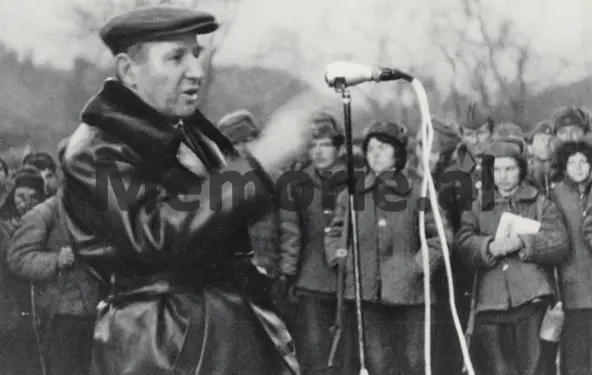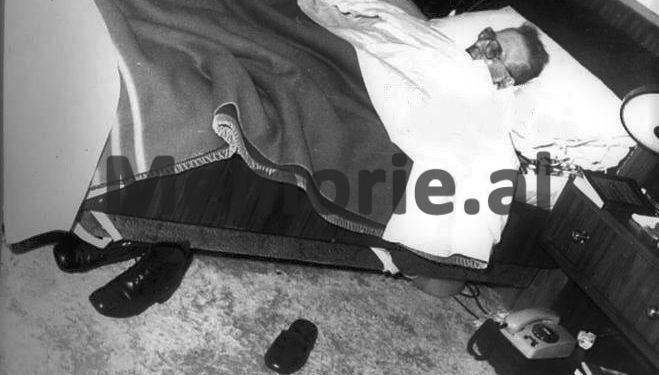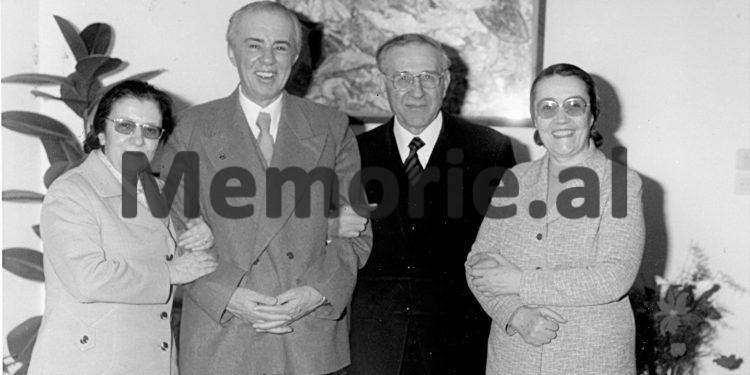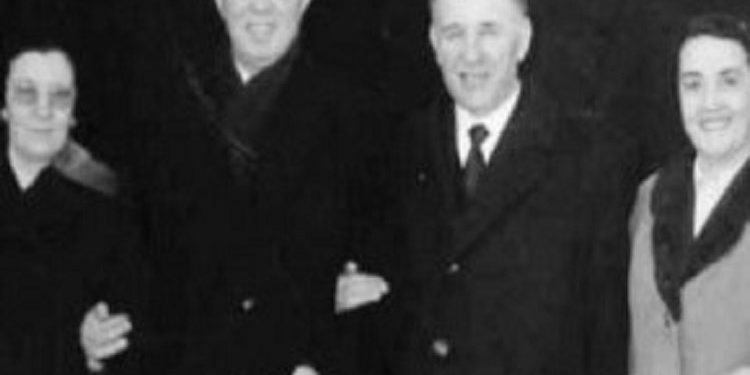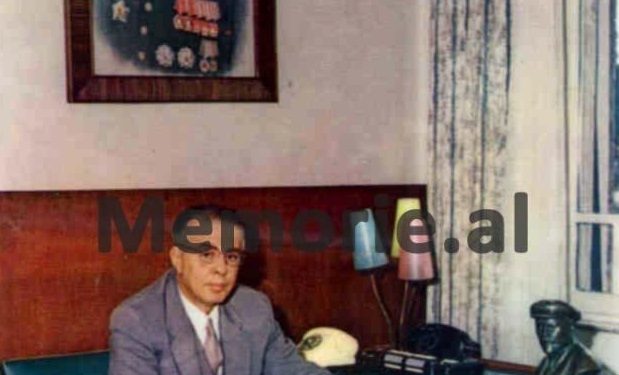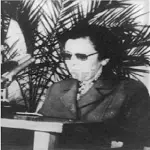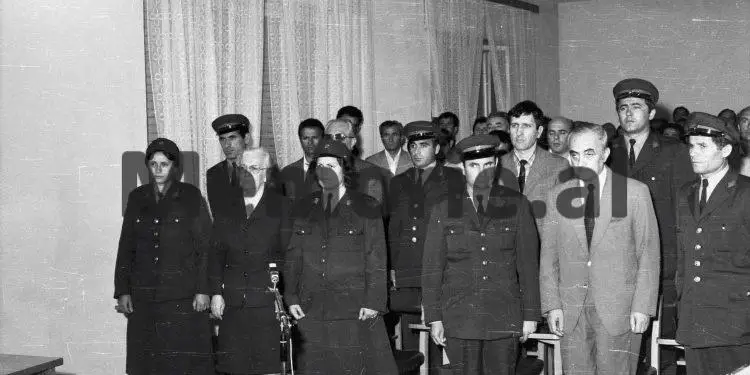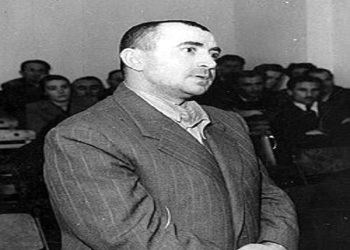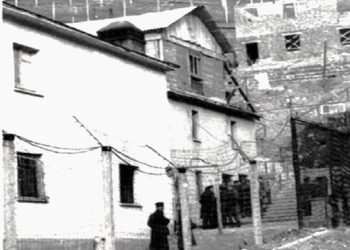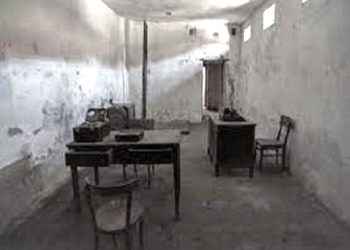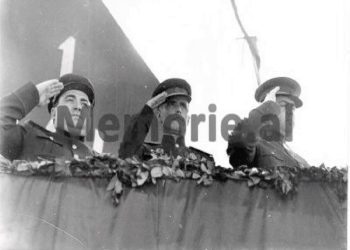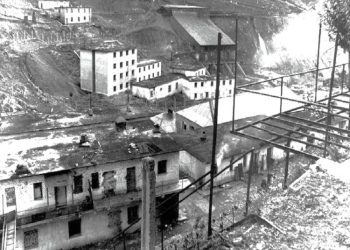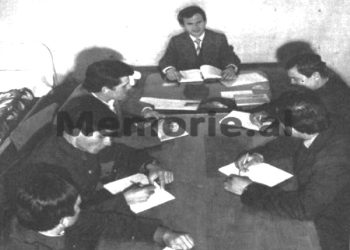By Afrim Imaj
The first part
-Confession of officer A.C. who served for 30 years in the Guard of the Republic, as part of Enver Hoxha’s escort and physical security group-
Memorie.al / “For almost thirty years, I have seen how Enver Hoxha relaxed over the photographs of his victims. He spent around 6 hours a day on the photographs of the shot dead bodies of Koçi Xoxes, Beqir Balluku, Petrit Dumes and Hito Çakos. But, on the photographs of Mehmet Shehu and the Xhevdet Mustafa gang, he has relaxed for three days”. This is the chilling testimony of the officer, who has stayed with Enver Hoxha for around 20 years. According to the former senior soldier, Enveri was extremely passionate about photographs of bodies killed by bullets. This “love” appeared to him for the first time in 1945. After one of his close collaborators was declared an enemy of the party and the court decided that he should be shot, another procedure began. As soon as the prosecutor had given the convict “Colpo di gracia”, then a professional photographer had to take over 30 photos of the bloodied body, in 30 different positions, and the photos had to be washed and stamped within the day, and had to be submitted in the office of the “Commander”!.
After the photographs were washed, they were sent in an envelope to the office of the Commander (Enver Hoxha). Enver Hoxha spent around 5 hours looking at these pictures. This was one of his most interesting relaxations. In the book of one of Enver Hoxha’s escort officers in service for almost 20 years, (which will soon see the light of publication), the chapter of “love” of photographs of dead bodies by Hoxha occupies an important place.
In this chapter, previously unknown details are provided, how the dictator stayed for more than 10 hours with the photographs of Koçi Xoxes, locked in his office. But he did the same with the photographs of Beqir Balluku in 1975, as well as of Petri Duma and Hito Çako. Also, numerous details are evidenced in this confession, how he stayed for 6 hours a day for almost a week, with the photographs of Mehmet Shehu, taken after his suicide.
Dated December 18, 1981
The phone of the Criminalistics Laboratory at the Ministry of the Interior has rang more than 30 times. It was December 18, 1981. One of Enver Hoxha’s adjutants demanded that the pictures of Mehmet Shehu’s suicide be washed urgently. In the bed where Mehmet Shehu had killed himself, in addition to the photographer of the Criminalistics Laboratory of the Ministry of the Interior, another photographer was sent, who should take at least 100 shots, of which more than half were of the motionless body of Mehmet Shehut in the bed of the bedroom, while 50 other shots were taken from the moment his body was taken out of the room until he was buried.
Both photographers, very professionals, worked with great care and dedication, because at 10:00 on December 18, 1981, there should have been more than 500 photographs of Mehmet Shehu’s suicide body in the Commander’s office. These photographs were the Commander’s personal fund. But by 8.00 am the photographs were not finished and there was a big mess in the Ministry of the Interior. Kadri Hazbiu himself took care of the urgent washing of the photos and their delivery to the commander.
He was so diligent in this procedure that he personally stayed at the stages of washing the pictures. The format of the photos had to be 10 x 55 cm as the Commander had difficulty seeing clearly. The photos were taken with record no. 645, dated December 18, 1981, which is located in the Archives of the Ministry of Order in Box 741, in the current building, behind Albtelekom’s central offices. The photos were taken with minutes and on the envelope were written: “For the First Secretary of the Central Committee of the Labor Party of Albania, Enver Hoxha”.
A copy of these photographs, as well as the envelope, is in the Archives of the Ministry of the Interior. The photographs are exclusive, unpublished, except for three of them that the Commander himself ordered to be published. The large batch of 500 photos of the suicide of the former prime minister of Albania, Mehmet Shehu, went to the commander’s office at 9.30 in the morning and the commander was closed looking at them closely for around 6 hours.
December 19, 1981
On December 19, 1981, the Commander’s office received the photographs taken by a special photographer who did not participate in the investigation team of Mehmet Shehu’s suicide. Even with these pictures, the commander has been locked up for more than six hours. At 1:30 p.m. on December 19, 1981, the Commander released three photographs of the suicide of the former prime minister, which would be used by the expert. After they submitted with minutes no. 712 dated December 19, 1981 three suicide photographs, an order was given to keep only one film and destroy the other 10 films.
It was also given a firm order to be checked by a special group of four people at the Criminalistics Laboratory at the Ministry of the Interior so that no photographs remain and all traces of the washing of the photographs disappear. The three photographs approved by the Commander were attached to Mehmet Shehu’s investigative file, while the rest of the photographs were locked in the Commander’s safe, who personally kept the key tied to his pants belt, on the right side, so that it would not be seen when he walked. .
December 20, 1981
“The commander has been locked up for more than 6 more hours and has opened on the table all the photographs of the suicide of former Prime Minister Mehmet Shehu. He drank more than four coffees without sugar, breaking all the rules of his diet. When we poured his coffee, we saw that he had opened many pictures on the table and was moving them, arranging them like fortune tellers playing cards. At 12:00 p.m., he issued the order, signed with his own hand, to take action on a national scale for the disappearance of all photographs and activities of Mehmet Shehu in state institutions, especially in libraries.
For the realization of this action, on the part of the Ministry of the Interior, many intellectuals of various professions have been mobilized, who have removed in record time for 24 hours, the fund of all public photographs of Mehmet Shehu, the slogans written in every school and in every center of culture, as well as eliminated everything from what was written in the works of Enver Hoxha.
The Commander’s order bears no. 9987. That same day, the Presidium of the People’s Assembly made a decision to cover with black tape all phrases where Enver Hoxha mentioned Mehmet Shehu until they were republished. The action lasted only three days and throughout the country, no traces or photo of the “traitor and enemy of the people”, Mehmet Shehu, could be found.
The arrest of Kadri Hazbi with 50 elected officers
Date October 8, 1982
After the 15-day discussion in the Central Committee and in the Political Bureau of the PPSh, on: “the hostile activity of Mehmet Shehu”, at 07:00, over 50 of the most selected officers of the State Security, surrounded the house of Kadri Habi, which was located between the Second Directorate of State Security and the Vietnamese embassy, where the “Pyramid” is today. Since 22:00 in the evening, Kadri Habiu’s guards were paralyzed and measures were taken to make a very spectacular arrest. Kadri Hazbiu was leaving the house at 07:00 and as soon as he went down the stairs and went to the car that was waiting for him in the courtyard, he was handcuffed.
More than 15 Security officers poured over his body, which caused many hematomas. They tied his hands and feet, and put a spacesuit on his head and from there he was taken to Prison 313 of Tirana. The story of torture against Kadri Hazbiu is the most shocking and macabre. His teeth were pulled out, his nails were pulled out and the whole time, he was kept hand and foot bound, with chains and a spacesuit on his head. In his cell, three officers of the State Security, with spacesuits on their heads, stayed inside all the time, for fear that Kadri Hazbiu would kill them. The horror from Kadri Hazbiu was very very big…!
How did Enveri personally take care of the investigation, filming and photographing under torture of Fiqret Shehu?!
Enver Hoxha, from December 18, 1981 to November 18, 1983, around 10 hours a day, locked himself in his office and carefully checked the photographs of the dead bodies of Mehmet Shehu, Kadri Hazbiu, Feçor Shehu, Llambi Ziçishti and Peçin lamp. But Enver Hoxha has looked for and carefully checked the photographs of Mehmet Shehu’s son, Vladimir Shehu, who died under very mysterious circumstances in exile in Gramsh.
All Enver Hoxha’s reports with the files of the hostile group of 21 people, headed by Fiqirete Shehu and Kadri Hazbiu, are located in the Archive of the Ministry of Interior. The former officer, who served for almost 20 years with the former commander, in his book brings all the details of Enver Hoxha’s reports with the 21 files of the hostile group accused of being agents of the American CIA.
January 18, 1982
The commander went to the office early in the morning. He was very nervous and his hands were shaking. Entering the office, he ordered that no one disturb him as he has a very important phone call. The day before, Hekuran Isai had been in his office and the two of them together, face to face, had discussed with each other for a long time. At 14.00, in the village of Belsh in Elbasan, Fiqrete Shehu and her son, Skënder Shehu, were arrested. The accusation was formulated with only three words: “Enemies of the Party”.
Everyone confirmed that the charge was formulated by the Commander himself and it was a very strong charge. The purpose of the arrest, written in the instruction letter signed by Enver Hoxha, was: To prove that Mehmet Shehu was an agent of the American CIA. In the list of 17 tasks, made by Enver Hoxha and located in Box 801, in the Archives of the Ministry of the Interior, it is said that it should be revealed that Fiqirete Shehu has carried out tasks assigned by Mehmet Shehu when he allegedly went to meet her son, Skender, in Denmark and Sweden.
The two arrested, even though they were tortured and massacred by the group of investigators for almost 30 days, did not accept any of the charges. The commander, (Enveri), has personally dealt with their investigation. He is interested and has been very stressed about the investigation against Fiqrete Shehu. A very large amount of photographs were taken during the arrest of Fiqrete Shehu, while the investigation against Fiqrete Shehu was filmed for around four hours. On February 17, 1982, Enver Hoxha was locked in the office for five hours, watching all the details of Fiqret Shehu’s investigation.
February 18, 1982
The commander is up early again and was very distracted. It was one of the first times he had uncombed hair. But everyone thought that the Commander was sick with diabetes and that was the reason why he had uncombed hair. But at 12.00 the news broke that Feçor Shehu, former Minister of the Interior, has been arrested.
His arrest caused a stir. But the most shocking was the news that the son of Mehmet Shehu, Vladimir Shehu, who was interned in Gramsh, had died under mysterious circumstances. The commander asked to know all the details of the death of Mehmet Shehu’s son, Vladimir Shehu. They brought the complete file of the death certificate of Mehmet Shehu’s son to the office.
Two photographs of Mehmet Shehu’s dead son were attached to each sheet of the file format. He stayed for more than 12 hours in the office closed on this file, waiting for news on how the arrest of Feçor Shehu went. But the most tragic part recorded in the minutes of interrogation for almost 30 days of Feçor Shehu, Mehmet Shehu’s first cousin, is that he did not accept any of the charges. The torture at his address lasted for 8 consecutive months, until the end of September 1982. He was able to survive with very serious wounds on his body until October 18, 1982, when Enver Hoxha’s order arrived to shoot him.
It can be said indisputably that Feçor Shehu was the only victim of the communist dictatorship who did not accept the accusation, refused to speak and was not broken by inhuman torture. He lived for almost three months tied hand and foot and with a spacesuit on his head. Feçor Shehu’s file is complete and with many details in the secret archive of the Ministry of the Interior. In this file there are details of all the witnesses who appeared in his investigation behind closed doors in Prison 313 in Tirana.
Over 30 photographs of the dead Feçor Shehu are in File No. 912, in this archive. These photographs and another part have been in Enver Hoxha’s office for almost 10 days. For Feçor Shehu and the other 21 members of his hostile group, there are also four film cassettes. These film cassettes have passed through Enver Hoxha’s filter several times. He personally took care of what to expect from the recordings of the investigation and the closed-door trial of Feçor Shehu and the other 21 detainees.
March 18, 1982
On March 18, 1982, 18 other members of Mehmet Shehu’s hostile group were arrested. At the top of the list were Feçpr Shehu and Llambi Ziçishti, at that time former Minister of Health. Enver Hoxha, on film tapes, was brought to his office the entire procedure of the arrest of the hostile group. Enver Hoxha, from December 18, 1981 to the end of November 1982, dealt almost every day with the files of the “hostile group”, of 21 high officials headed by Kadri Hazbiu and Fiqrete Shehu.
The accusation against Kadri Hazbiu was the same as that of Mehmet Shehu, Fiqrete Shehu and Kadri Hazbiu. Of the 21 arrested from the “hostile group”, Llambi Peçini, Llambi Zicishti, Feçor Shehu and Kadri Hazbiu, were sentenced to be shot. Only at the end of February 1982, when Fiqrete Shehu learned of her son’s death, in order to save the other two sons, she pretended to accept the accusation and signed everything that the investigators brought to her, without even reading them at all.
Film tapes were immediately made with Fiqrete Shehu’s questions. There are many montages in these tapes. In Enver Hoxha’s office, the material went assembled, while the most painful parts were removed. In these tapes, Fiqrete Shehu was filmed in cell 101, on the first floor of Prison 313. During eight hours of question-and-answer, Fiqrete Shehu explained, always according to the tapes, that she is an agent. But the most painful part and that changed the whole course of events, was the death of Fiqrete Shehu in prison, quite unexpectedly, on September 11, 1988, at the Prison Hospital in Tirana.
Hundreds of photographs were taken of Mehmet Shehu’s corpse in the prison cell. The photographs were submitted to the office in a file to the Commandant. Likewise, there is a full record of the sudden death of Fiqrete Shehu and an expert report signed by three doctors and eight investigators. These bundles are carefully preserved.
A part of the photos were burned, while about 20 photos of the dead Fiqrete Shehu were mounted on the format sheets in the third folder of her investigative file,” concludes the testimony of the former senior soldier of the Ministry of the Interior, who served for almost 20 years, in the escort and physical security group of the dictator Enver Hoxha.
How did Kadri Hazbiu lose weight from 83 to 47 kg after eleven months of investigation?!
The Albanian community of America considered the game with Xhevdet Mustafa a disaster. Enver Hoxha used a drug trafficker to hit Kadri Hazbiu, Feçor Shehu, Llambi Ziçishti and 18 other members of Mehmet Shehu’s hostile group. The State Security, thanks to a very refined game, managed to bring a gang headed by Xhevdet Mustafa, to annihilate Enver Hoxha, by means of a Security officer infiltrated in the diaspora. That’s how long it took for Kadri Hazbiu to be crucified.
The real arrest of Kadri Hazbi had begun to take shape since the suicide of Mehmet Shehu. Kadri Hazbiu, even though more than 20 very serious accusations fell on him, was not an enemy of the Party nor of Enver Hoxha. On the contrary, he was just as incriminated as Enver Hoxha himself and all the other members of the Political Bureau of the PPS Central Committee. But thanks to the fierce battle that took place inside the Politburo, Kadri Hazbi’s fate was tragic, painful and shrouded in a great mystery.
Kadri Hazbiu was born on July 13, 1922, in Mvarovo, Vlora. For 26 years he was the Minister of the Interior and for almost two years as the Minister of Defense. He was related by blood to Mehmet Shehu. He was arrested on October 15, 1982, two days after Enver Hoxha’s famous plenum, for the so-called “truth of Xhevdet Mustafa’s gang” and his connections with members of the Political Bureau, to kill Enver Hoxha. Regarding Kadri Hazbiu, the investigator spent 11 months in Prison 313. The investigation and the entire judicial process against Kadri Hazbiu and Feçor Shehu, resembles the investigation and execution that Hitler did to his closest collaborators, in 1944, with the claim that they allegedly , they would assassinate him.
What happened at 23:30 on September 10, 1983 on Linza Hill?
Kadri Hazbiu and Feçor Shehu were executed. The word shot is negligible; it is like salve on the wound in relation to what actually happened. Kadri Hazbiu, on the day he was arrested, weighed 83 kilograms. On the day of the shooting, he weighed 47 kilograms. Feçor Shehu is said to have lost more than half of his body weight. For almost 11 months, they were tortured, tortured and tortured in the cells of Prison 313, using Nazi methods. After the interrogation sessions ended, always between 19:00 and 05:00 in the morning, they were chained and spacesuits were placed on their heads. Although the question: ‘admit that you are enemies of the Party and the people’, has been asked thousands of times, and under conditions of cruel torture, they have never accepted the accusation.
Kadri Hazbi’s nails and teeth were pulled out, his armpits were burned and one of his arms was crippled. But again he is not humbled. The same thing almost happened with Feçor Shehu. On September 10, 1983, it was decided that they should be shot. The “ZIS” type car entered Prison 313 at 19:30 on September 10, 1983. The “death squad” was placed in its back. The car was covered in rain. Feçor Shehu was the first to be taken out of the cell, who found it almost impossible to walk. He was picked up by four Security officers, one of Enver Hoxha’s most trusted, and mounted on the left side of the car. He had a black hood on his head.
After 10 minutes, when the prison was completely silent, Kadri Hazbiu was taken. He was completely wasted and crippled. In addition to the spacesuit on his head, they also put a black hood on him. This is an absolute requirement of the law, for all those who are shot. To the place of execution, they are taken with a black hood. No one knew where the car would go. At 21:05, the car left Burgu 313 and headed towards the Ring Road towards the Train Station. All measures were taken so that nothing would be noticed. The car, after describing the Ring, after about 25 minutes, took the turn to the alley in the western wing, where today the Academy of Order is located, on Sauk hill and from there, on a secondary road, they stopped in a secret place near the village of Linze. After walking about 800 meters, he stopped in a lawn. The entire execution operation of Kadri Hazbi was led by Security officer M.D.
The execution operation of Kadri Hazbi is coded “Mavrova”. No one spoke the whole way. The two victims who were going to be shot were two corpses that could not be seen breathing. In the trial, Kadri Hazbiu did not accept the accusation, ignored all the witnesses who had confronted him in the courtroom and asked many questions to all of them. Kadri Hazbi’s answer was the same: “I have loved the Party with all my heart and soul.” I am not an agent of anyone and I am not an enemy of the party”.
Almost the same answer was given by Feçor Shehu. Both high officials of the dictatorship had waited very coldly for the court’s decision. The decision was very short. It said that; Kadri Hazbiu was sentenced to death by firing squad. Feçor Shehu was sentenced to death by firing squad. Llambi Ziçishti and Llambi Peçini received the same sentence. Everyone was familiar with the court decision, even though it was held behind closed doors. Only the firing squad knew nothing. The firing platoon commander was returning from a training shoot that day.
The platoon had been shooting at a distance of 200 meters, targeting the chest, with automatic carbines “July 10”, which carried 20 cartridges each in their comb. At 4:00 p.m., the entire platoon was supplied with two cartridges each. All 18 soldiers of the firing platoon were guards, who had participated in the 10-race Spartakiad of the Army, which took place on July 10, 1982 in Tirana. They kept both magazines in their comb bag. At 18:00, they had taken the equipment with them, put the guns on the fuse and got into the back of the car.
They knew they would be shooting at night, according to the curriculum. The car, after entering an alley, in the middle of a vineyard with grapes, not yet harvested, which belonged to the “Gjergj Dimitrovi” farm, had stopped near a small lawn. At the top of the lawn, there was a fence and about 300 meters further a house, which had no light at all…! The M.D. officer got off first, then all those who were on the back of the car got off…! Memorie.al
The next issue follows




